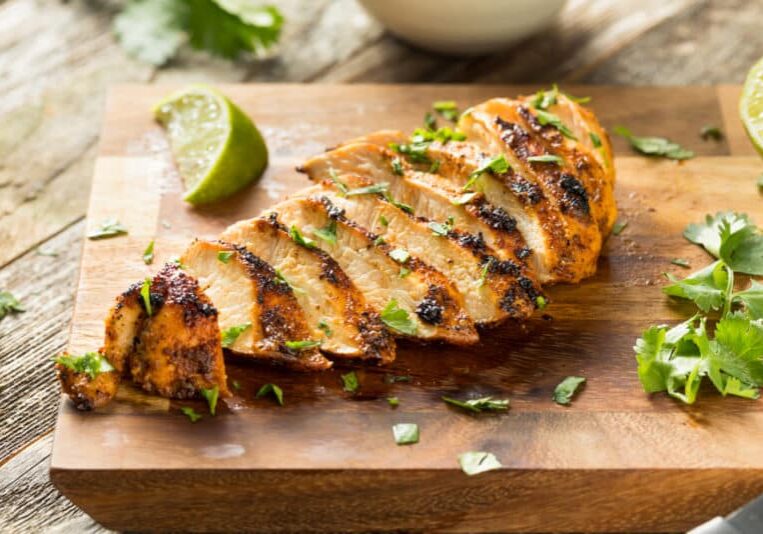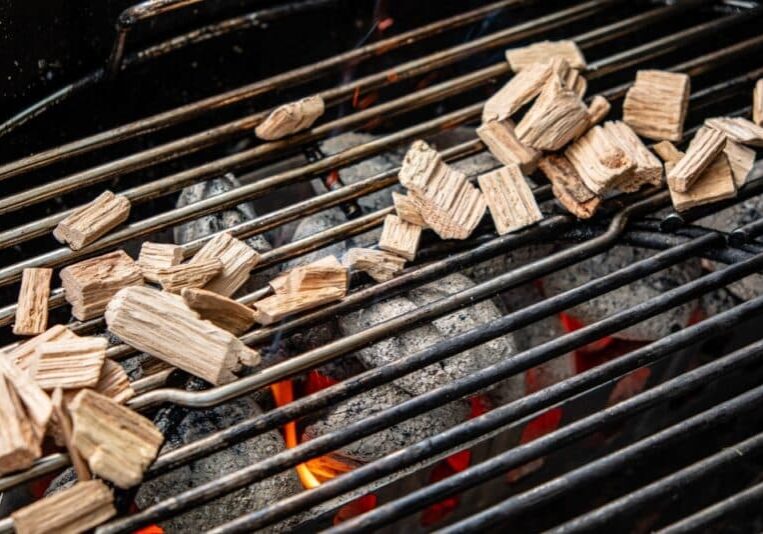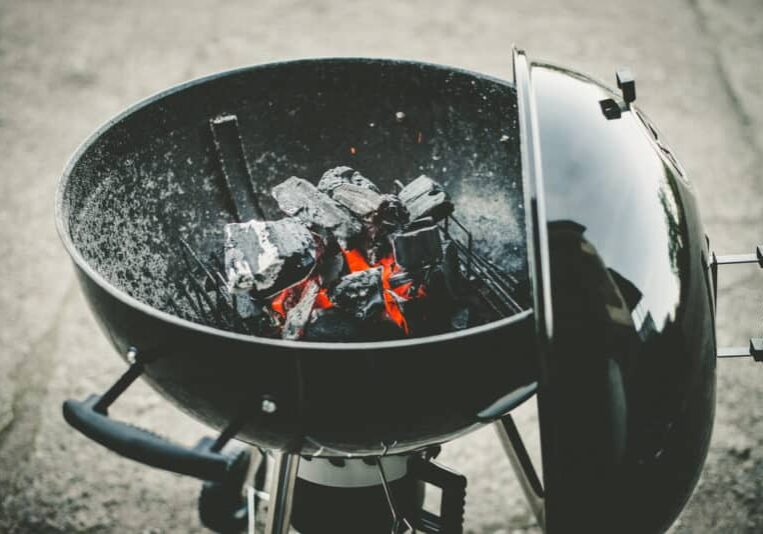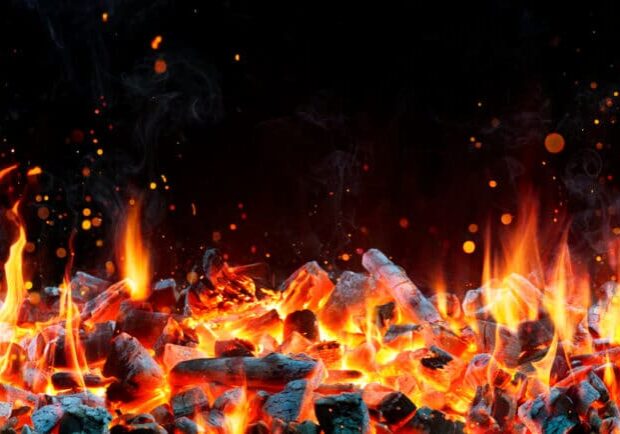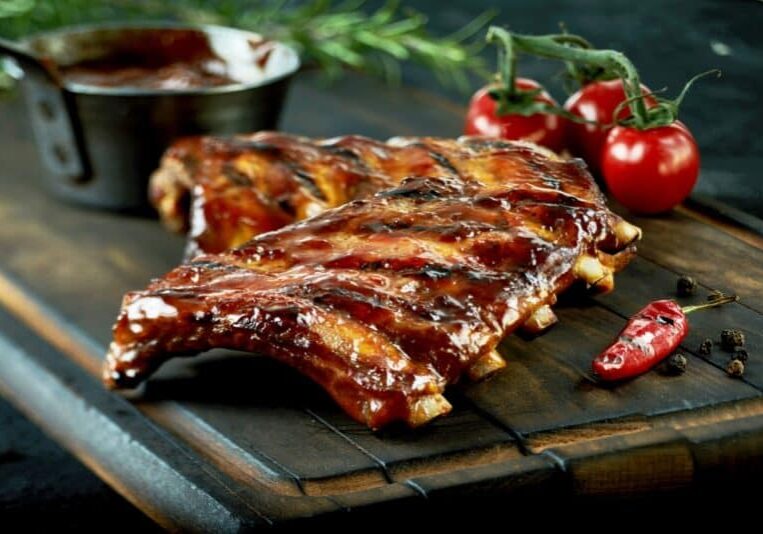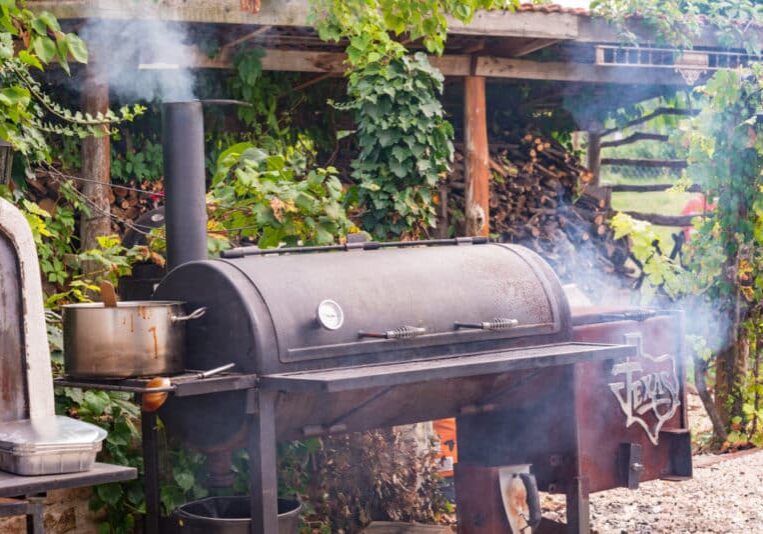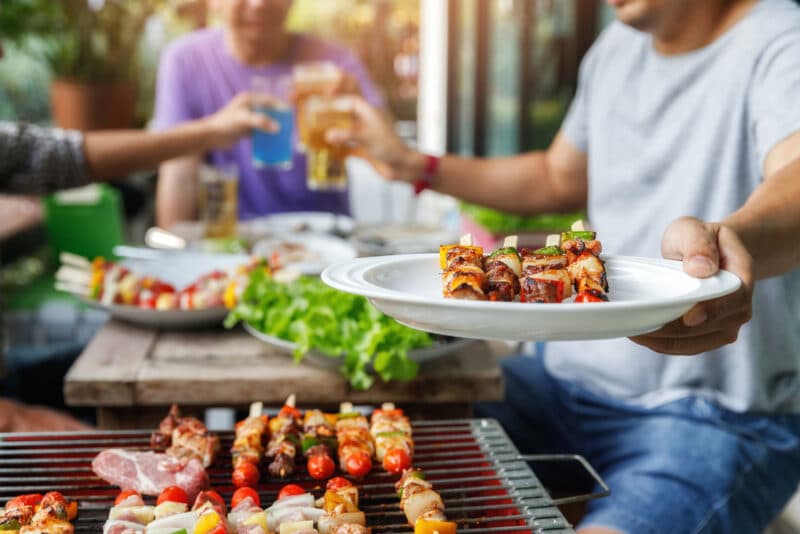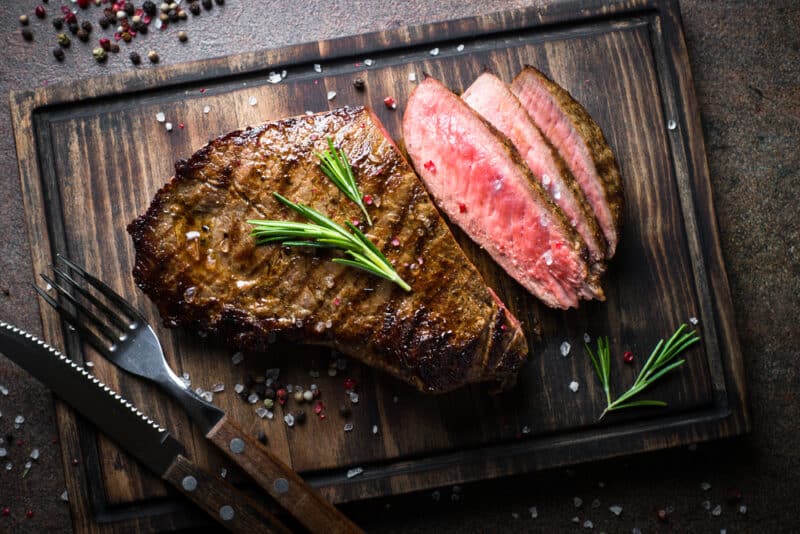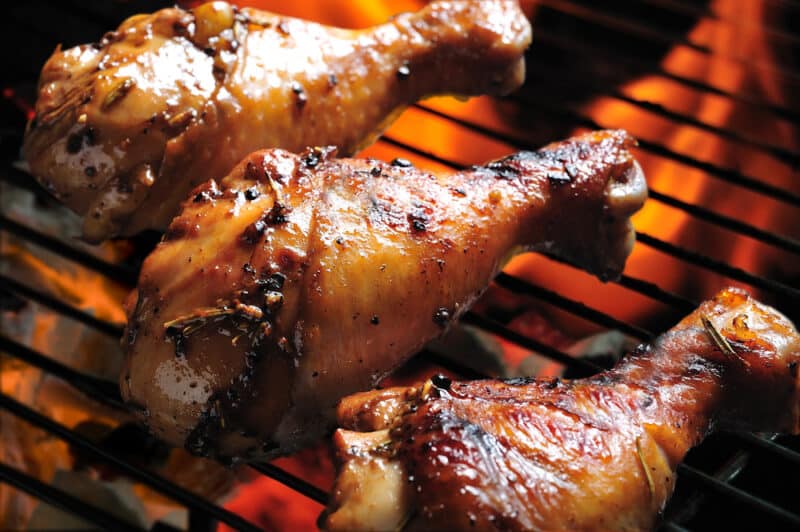How Hot Does a Charcoal Grill Get? Discover the Temperature Range
TheGrillingMaster.com is reader-supported. If you buy something using the links on our site, we might earn an affiliate commission at no added cost to you. This helps us pay our staff to keep making awesome content for you!
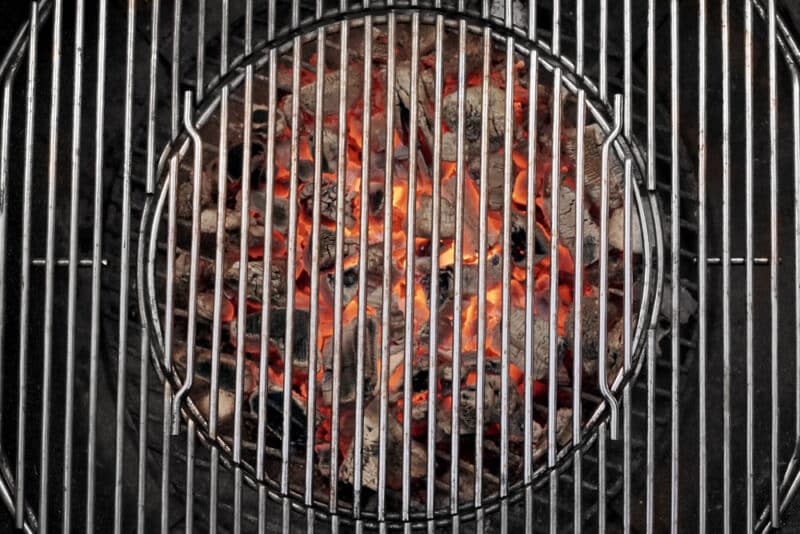
Ever find yourself pondering just how sizzling your charcoal grill gets while you’re flipping burgers for the family? Trust me, navigating the sweltering labyrinth of a good old-fashioned cookout is something I’ve always found intriguing.
With those coals reaching scorching temperatures upwards of 2,000 degrees Fahrenheit – talk about a hot ticket to flavor town! In this post, I’m excited to walk you through it all: from pinpointing that sweet spot temperature for perfectly seared steak to sharing some tried-and-true tips on keeping your heat game strong.
So grab your tongs and apron; we’re about to turn up the heat on our grilling skills!
Key Takeaways
- Charcoal grills can reach high temperatures of over 2,000°F, but most grilling is done between 200 – 700°F depending on the cooking method.
- To control heat levels in a charcoal grill, adjust vents for airflow and create a two – zone grill for direct and indirect cooking options.
- High heat grilling (~400-550°F) is great for searing meats quickly while low and slow smoking (225-275°F) infuses flavor into foods like ribs or brisket over many hours.
- Gas grills offer easy temperature control with dials, while ceramic egg style grills excel at retaining even heat due to their insulation properties.
- Investing in a good temperature probe is crucial to monitor your grill’s internal temperature accurately for perfect cooking results.
The Heat Profiles of Different Grill Types
Gas grills, kettle grills, ceramic egg style grills, and pellet smokers all have their own unique heat profiles that affect the temperature range for cooking. Each type of grill offers different advantages and drawbacks in terms of controlling and maintaining cooking temperatures.
Gas grills
I love the convenience of gas grills for their quick start-ups and easy temperature control. With a simple twist of a knob, they heat up fast, making them perfect for those spur-of-the-moment cookouts with friends or family.
Gas grills typically reach temperatures between 400 to 600 degrees Fahrenheit when set to high, allowing you to sear steaks perfectly. The mid-range settings are great for veggies and fish where you want less intense heat.
Maintaining the desired barbecue temperature on a gas grill is a breeze thanks to built-in thermometers that many models feature. I adjust the burners to keep the grill steady at my target temp, which is especially handy when juggling different dishes that require various levels of heat.
Some advanced gas grills even come with multiple burners that let you create different heating zones – ideal for cooking different types of food simultaneously without burning anything.
Kettle grills
Kettle grills allow for direct and indirect cooking, making them versatile for various grilling techniques. The charcoal is positioned in the center of the grill, with adjustable vents on both the top and bottom to control airflow and temperature.
This design provides a consistent heat source that’s suitable for direct high-heat grilling or creating an indirect heat zone for low and slow smoking methods.
Ceramic egg style grills provide excellent insulation, resulting in superior heat retention compared to kettle grills. This type of grill is ideal for maintaining steady temperatures over long periods, especially when using the low and slow smoking technique.
Pellet smokers offer precise temperature control through digital thermostats, automating the process by feeding wood pellets into a fire pot as needed.
Ceramic egg style grills
Ceramic egg style grills are excellent for heat retention and distribution due to their thick ceramic walls. This design allows them to reach high temperatures, making them perfect for searing steaks or cooking pizzas at around 600-700°F.
The unique shape of these grills also enables them to function as a convection oven, allowing for low and slow cooking at temperatures as low as 200-250°F, ideal for smoking meats or fish.
These versatile grills offer precise temperature control through adjustable vents and dampers. By mastering the airflow within the grill, I can easily maintain consistent and accurate temperatures while cooking various dishes.
Pellet smokers
Pellet smokers provide consistent and precise temperature control, making them ideal for low and slow cooking. The pellets are fed into the firepot by an auger, and a digital controller regulates the temperature by adjusting the rate at which pellets are added.
This results in a steady heat source that is perfect for smoking meat at lower temperatures while infusing it with rich, smoky flavor.
Pellet smokers also offer versatility, allowing you to easily adjust the temperature for grilling at higher heats when needed. The ability to set specific temperatures ensures that your food cooks evenly without constant monitoring or adjustments.
Ideal Temperatures for Different Cooking Methods
For high heat grilling, you’ll need a temperature of around 400-450°F, while medium heat grilling requires about 350-375°F and low heat grilling is best at 250-275°F. If you’re looking to do some low and slow cooking or smoking, aim for a temperature range of 225-250°F.
Discover the best ways to achieve these temperatures with your charcoal grill by reading more.
High heat grilling
For high heat grilling, it’s crucial to get the charcoal grill temperature up to around 400-550°F. This level of heat is perfect for searing steaks, cooking thin cuts of meat, and achieving a delicious caramelized crust on vegetables.
To achieve this high heat range with charcoal grilling, arrange the coals close together at the bottom of the grill, ensuring they are evenly spread and have reached their peak burning temperature.
Maintaining control over the temperature is key during high heat grilling sessions. It’s necessary to adjust the vents to allow more oxygen in while closely monitoring the fuel. Additionally, arranging a two-zone grill allows for direct heat on one side and indirect heat on the other, providing flexibility in managing different levels of temperatures during cooking.
Medium heat grilling
Medium heat grilling is perfect for cooking items that need a little more time on the grill. It usually ranges between 350°F to 400°F, which is ideal for smaller cuts of meat, vegetables, and food items that need to cook through without burning on the outside.
To achieve medium heat on a charcoal grill, I arrange the coals in an even layer so that there’s consistent heat across the grill surface. By spreading out the charcoal, it helps maintain a moderate and steady temperature for an extended period.
To ensure even cooking at medium heat, I often flip or rotate my food halfway through the grilling process. This simple action ensures that everything cooks uniformly and doesn’t burn.
When dealing with larger cuts of meat or thicker vegetables, medium heat allows me to get a nice sear while ensuring the inside cooks thoroughly without charring the exterior.
Low heat grilling
Transitioning from medium heat grilling to low heat grilling, it’s essential to understand the nuances of cooking at lower temperatures. Low heat grilling is perfect for foods that require a gentle touch, such as delicate cuts of fish or vegetables.
To achieve this temperature, I adjust the airflow in my charcoal grill to reduce the intensity of the flames and place the food over indirect heat. This method ensures even cooking without charring or drying out the ingredients.
When grilling at lower temperatures, I focus on patience and precision to bring out the natural flavors of the food without scorching or burning it. By mastering low heat grilling techniques, you can elevate your culinary skills and create tender, succulent dishes that are bursting with flavor and juiciness.
Low and slow/smoke zone
To achieve the perfect low and slow cooking temperatures on a charcoal grill, I use the indirect heat method. By arranging the coals to one side of the grill, I create a zone for smoking and slow cooking.
Maintaining a consistent temperature between 225-275°F is crucial for smoking meats like ribs, brisket, or pork shoulder. Using quality hardwood charcoal and adding wood chunks for smoke flavor helps to control the temperature in this range.
For extended smoking sessions, it’s essential to monitor and adjust the vents as needed to regulate airflow so that the fire burns slowly. Additionally, using a water pan next to the coals can help stabilize temperatures while also keeping food moist during longer cook times.
How to Control the Temperature of a Charcoal Grill
To control the temperature of a charcoal grill, invest in a good temperature probe to monitor the heat. Light the charcoal for fuel and open dampers to regulate airflow. Set up a 2-zone grill and adjust the vents as needed while monitoring the fuel to maintain consistent temperatures for your grilling needs.
Invest in a good temperature probe
Investing in a quality temperature probe is essential for precise control over the cooking temperature. With a reliable probe, you can accurately monitor the internal temperature of your grill, ensuring that it stays within the desired range for perfect results every time.
A good temperature probe allows you to make real-time adjustments to achieve high-heat grilling, medium-heat grilling, or low and slow smoking temperatures with ease. By investing in a dependable temperature probe, you’ll have greater confidence in achieving optimal cooking temperatures and mastering various grilling techniques.
Light charcoal for fuel
To light charcoal for fuel, place the briquettes or lump charcoal in a chimney starter. Crumple newspaper underneath and ignite it to start the coals. Let them burn until they’re covered with ash, then carefully distribute them onto the grill for cooking.
After lighting the charcoal for fuel, ensure it is evenly spread across the bottom of your grill to achieve consistent heat distribution. This method will help you maintain control over the temperature and create perfect grilling conditions.
Open dampers
To maintain the temperature in a charcoal grill, open dampers to allow air circulation. This will increase the heat as more oxygen fuels the charcoal. Adjusting the dampers controls how much air enters and exits the grill, influencing temperature regulation.
After adjusting dampers, observe how it affects heat levels within your charcoal grill. This level of control allows for precise cooking temperatures, ensuring your food is cooked just right.
Set up a 2-zone grill
To set up a 2-zone grill, arrange the charcoal on one side of the grill to create a hot zone and leave the other side empty for indirect cooking. Light the charcoal and wait for it to ash over before starting to cook.
This setup allows you to sear food over high heat and then move it to the cooler side to finish cooking without burning. It’s perfect for achieving different levels of doneness in your grilled dishes, giving you more control over the cooking process.
Once your 2-zone grill is set up, you can easily switch between direct and indirect heat depending on what you’re grilling. The ability to have both high heat and low heat areas at your disposal provides versatility when preparing various types of food on your charcoal grill.
Adjust the vents as needed
After setting up a 2-zone grill, it’s crucial to adjust the vents as needed to control the airflow and temperature. Opening the vents allows more oxygen into the grill, increasing the heat levels, while closing them reduces airflow and lowers the temperature.
By fine-tuning the vents, you can easily maintain the desired cooking temperature for various grilling methods such as searing or slow smoking.
Continuously monitoring and adjusting the vents throughout your grilling session will help you achieve consistent and precise temperatures for perfect barbecue results. Remember that even small adjustments can make a big difference in controlling the heat of your charcoal grill.
Monitor the fuel
After adjusting the vents to achieve the desired temperature, it’s important to monitor the fuel throughout the grilling process. Keeping an eye on the charcoal and adding more as needed ensures consistent heat levels for successful cooking.
By observing and replenishing the fuel, one can maintain a steady temperature range and control the intensity of the heat when grilling different types of food. This proactive approach helps prevent sudden drops in temperature and allows for adjustments to be made in real-time, resulting in perfectly grilled meals every time.
Ensuring that there is sufficient fuel throughout the entire cooking process is crucial for maintaining consistent heat on a charcoal grill. A watchful eye on the burn rate of charcoal will enable you to add more pieces at just the right time, preventing any unnecessary fluctuations in temperature during grilling sessions.
Differences Between Direct and Indirect Cooking Methods
Direct cooking methods involve placing the food directly over the heat source, while indirect cooking methods require placing the food away from the heat source. Direct grilling is ideal for foods that cook quickly, such as burgers and steaks, producing a delicious sear on the outside.
In contrast, indirect grilling is perfect for larger cuts of meat or delicate items that require longer cooking times without direct heat exposure.
The difference between direct and indirect cooking methods significantly affects how your food cooks. Understanding when to use each method can elevate your grilling game and ensure perfectly cooked meals every time.
Now let’s delve into essential grilling techniques for maintaining temperature control with a charcoal grill.
Next: 6. Conclusion.
Conclusion
In conclusion, understanding the temperature range of a charcoal grill is essential for achieving perfect grilling results. Maintaining and controlling the heat levels while using a charcoal grill allows for versatile cooking methods.
Experimenting with different temperatures will help you master the art of grilling on a charcoal grill. Grasping how hot a charcoal grill can get ensures that you achieve your desired cooking outcomes every time.
FAQs
1. What temperature range can a charcoal grill reach?
A charcoal grill can heat up to a wide temperature range, usually between 250°F for slow cooking and over 700°F for searing hot temperatures.
2. How do you control the temperature on a charcoal grill?
You can control the temperature of your charcoal grill through arranging the coals properly, managing airflow with vents, and using a thermometer to monitor heat levels.
3. Can I maintain a specific temperature while grilling with charcoal?
Yes! Maintaining temperature with charcoal is all about managing air flow and keeping an eye on your BBQ’s thermometer to make adjustments as needed.
4. Is there a chart that shows different cooking temperatures for a charcoal grill?
Certainly! Many grilling experts use a charcoal grill temperature chart that shows the best heat levels for different types of foods – from low-temperature smoking to high-heat searing.
5. What’s the best way to set up my coals for grilling at different temperatures?
Arranging your coals in patterns like direct or indirect heat zones helps manage what parts of your grill get more heat—an essential technique in controlling barbecue temperatures effectively.
6. Are there tips for ensuring even cooking temperatures when using my charcoal grill?
For consistent grilling temperatures, regularly shake off ash from burning coals and add new ones as needed; this keeps your Charcoal Grill at optimal performance throughout the cooking process.
Learn More About Grilling
If you want to learn more about grilling, check out these other helpful resources!

Patrick Harvey
Patrick is a life long grilling enthusiast with an eye for product development and user experience. His expertise helps us test and review all of the products you see the website.
About The Grilling Master
Hi there, I'm Kevin Turner, Founder and CEO of thegrillingmaster.com.
My passion has always been grilling, smoking and BBQ delicious meats that satisfy my inner carnivore!
I started this website to share my passion and knowledge with you, the hungry reader who wants to prepare the perfect meal.
You can leverage my years of experience as a pit master and professional.
Send me a message and let's connect on Twitter here.


